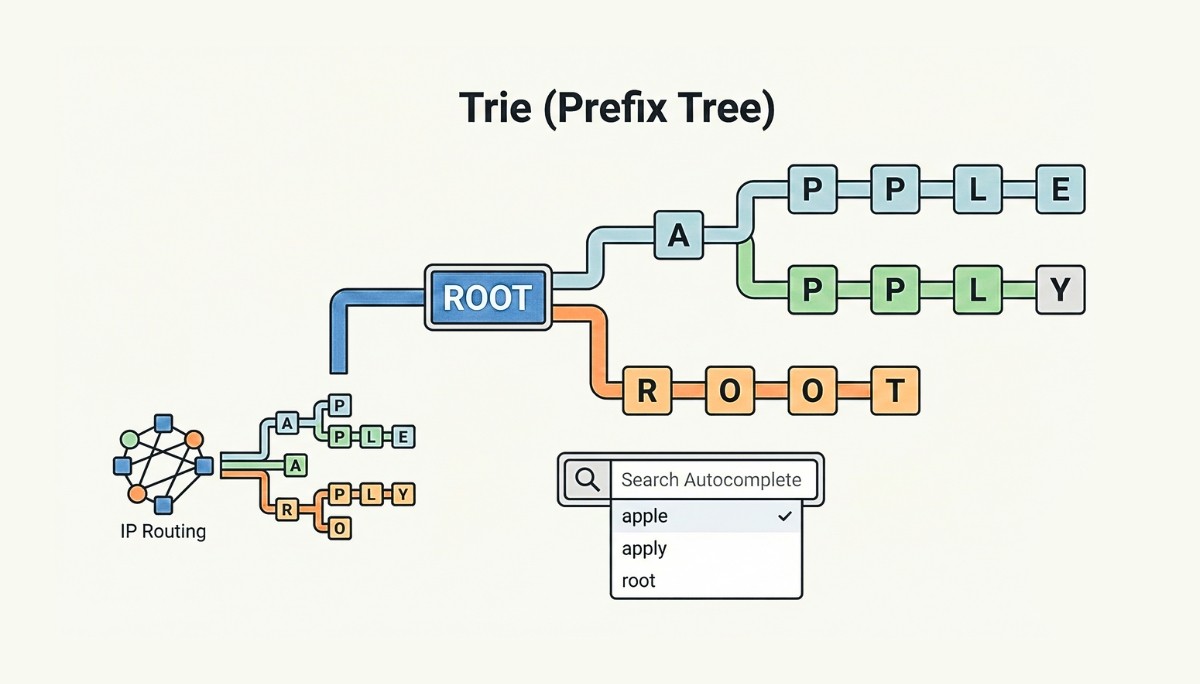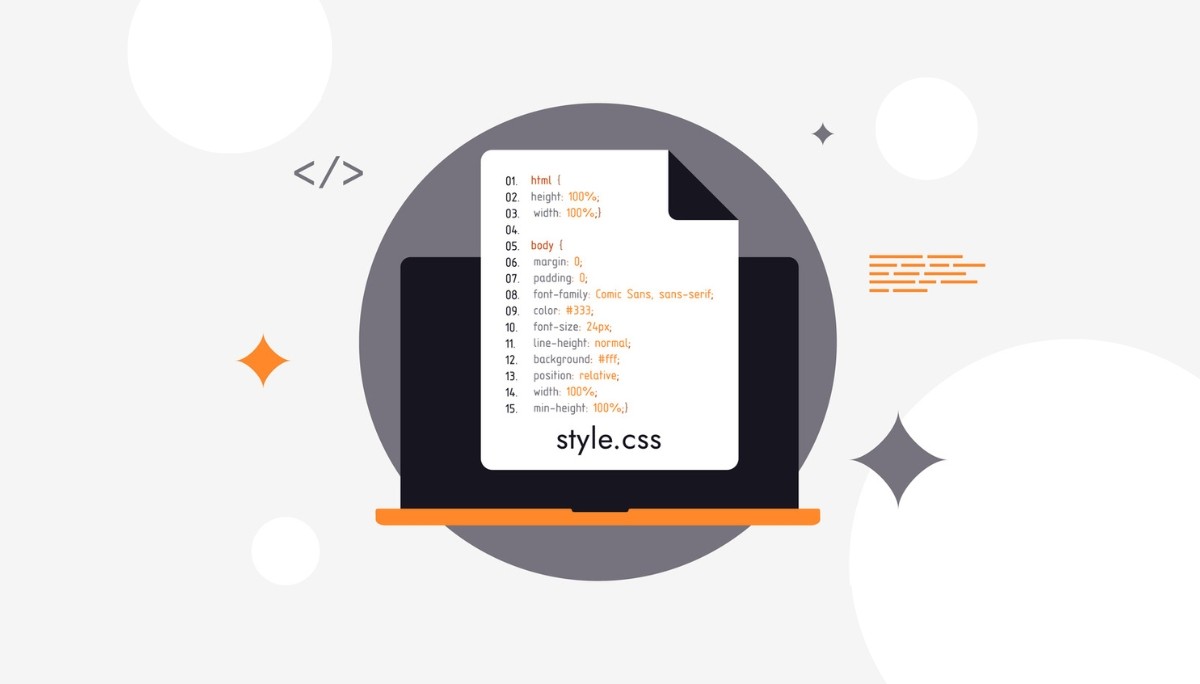Pseudocode Made Simple with Examples and Writing Tips
By
Liz Fujiwara
•
Sep 18, 2025
Pseudocode is a method for representing an algorithm or program logic using plain, human-readable language instead of strict programming syntax. By focusing on the core steps of a solution rather than specific code rules, pseudocode helps programmers plan, organize, and communicate their ideas more effectively. It serves as a bridge between the conceptual design of an algorithm and its actual implementation in a programming language.
In this article, we will explore what pseudocode is, why it is an essential tool for programmers and students alike, and how it can simplify coding tasks. We will also provide practical examples and tips to help you write clear and effective pseudocode, making it easier to develop robust and efficient programs.
Key Takeaways
Pseudocode serves as a bridge between algorithm design and code implementation, prioritizing clarity and readability to enhance team communication.
Key characteristics of effective pseudocode include a logical structure, plain English syntax, and flexibility, which allow tailored descriptions of algorithms.
Using pseudocode helps identify logical flaws early and simplifies the coding process by enabling developers to focus on the core logic of an algorithm without being distracted by programming language syntax.
Understanding Pseudocode

Pseudocode serves as a bridge between the abstract idea of an algorithm and its implementation in a specific programming language. It provides a human-readable outline of how a program should function, avoiding the complexities of programming language syntax. This makes pseudocode an ideal tool for describing what an algorithm must do in a detailed yet clear manner.
Written in plain English, pseudocode is easier to understand without knowledge of a specific programming language. This readability is crucial for collaboration among developers during the planning stages, ensuring everyone is aligned before coding begins.
Key Characteristics of Pseudocode
Effective pseudocode should be logical and easy to read, enhancing clarity in programming. It should be understandable to anyone, not just programmers, fostering better communication within teams. Unlike actual code, pseudocode communicates the algorithm’s logic without requiring knowledge of specific programming syntax.
This flexibility allows programmers to write pseudocode in a way that best suits their needs, as there are no universal standards for its structure. Despite this, pseudocode often includes elements common to programming languages, such as variable declarations and loops, written in a style that combines plain English with programming-like structure, which can vary widely.
Why Use Pseudocode?
Pseudocode helps in planning solutions and enhancing understanding, making it invaluable for team communication, documentation, and problem-solving. By focusing on the algorithm’s logic rather than specific programming languages, pseudocode improves communication among individuals with varying coding expertise.
This focus allows developers to concentrate on solving problems without the distractions of programming syntax, reducing debugging time, and encouraging careful consideration of logic before coding. Additionally, pseudocode helps identify potential logical flaws before any actual coding begins, ensuring a smoother development process.
How to Write Pseudocode

Pseudocode entails outlining an algorithm in a structured way that resembles code while using plain English to detail each step. Its primary purpose is to describe an algorithm clearly and simply, serving as an intermediate stage between an idea and its implementation in programming. Writing pseudocode helps programmers plan algorithms effectively before coding, bridging the gap between algorithm design and actual programming.
Pseudocode is easier to understand and interpret than complex code, making it ideal for identifying errors early in the development process.
Basic Syntax Rules
Effective pseudocode should be easy to read and understand, emphasizing clarity over strict syntax. While there are general guidelines for writing pseudocode, they are not as rigid as programming language rules. Pseudocode often uses reserved keywords like IF-ELSE, FOR, and WHILE to structure the logic flow.
Common keywords include:
SET / ASSIGN
IF / THEN / ELSE
WHILE
FOR
INPUT
OUTPUT
CALL
To indicate the end of a multi-line section, keywords such as ENDIF or ENDWHILE are used, while BEGIN and END typically mark the start and end of the pseudocode.
Structuring Pseudocode
Effective pseudocode should:
Be clear, structured, and detailed enough to guide the coding process.
Prioritize clarity in the logical sequence, making it easily understandable.
Use indentation to represent hierarchy and improve overall structure, especially for nested constructs.
Focusing on the logic flow and sequence of operations helps create effective pseudocode, ensuring that loops and conditions are clearly defined. Proper indentation indicates the hierarchy of operations, significantly enhancing readability.
Example: Finding the Largest Number
Let’s consider an example to illustrate how pseudocode simplifies the development process without adding complexity. The pseudocode for finding the largest number in a list demonstrates how to structure such a task. In this example, the pseudocode involves iterating through the list, comparing each number to the current largest number, and updating the largest number as needed.
When translating this pseudocode into a real programming language, maintaining the logical flow and structure is essential. Starting with a clear understanding of the requirements ensures that the solution can be effectively implemented.
From Pseudocode to Real Code
Translating pseudocode into real code involves converting its logical structure and flow into syntactically correct statements in a programming language. This process ensures that the final implementation behaves as intended, making pseudocode a versatile tool for programmers across different coding environments.
The same pseudocode can be implemented in multiple programming languages, highlighting its flexibility. Maintaining the logic flow during this translation is crucial to ensure that the final code functions as intended.
Implementation in Python
Implementing pseudocode in Python involves translating the logical steps into proper Python syntax. Failing to maintain the flow described in pseudocode can introduce bugs during implementation. A common mistake is misinterpreting variable scope, which can cause unexpected behavior in the final code.
Using clear variable names and maintaining structured logic enhances readability and maintainability, ensuring a smoother transition from pseudocode to fully functional Python code.
Common Pitfalls
Common errors during the translation from pseudocode to real code include losing the intended logic and flow. Misunderstanding conditional statements or loops can result in incorrect implementation.
To avoid these errors, focus on:
Maintaining the logical flow and readability of pseudocode, ensuring each operation is clearly defined.
Using consistent terminology throughout the pseudocode to prevent confusion during translation.
Keeping pseudocode simple and avoiding over-complication to make implementation easier and less error-prone.
Pseudocode vs. Flowcharts

Pseudocode and flowcharts are both valuable tools for bridging the gap between problem identification and code implementation. Pseudocode, with its readable format, is ideal for understanding algorithms, while flowcharts provide a visual representation of algorithms using standardized symbols.
Using both tools together:
Provides comprehensive algorithm documentation
Offers multiple perspectives on problems
Aids in spotting logical errors
Enhances communication within teams
Together, they help developers organize their thoughts and communicate algorithms more effectively.
When to Use Pseudocode
Pseudocode is essential in software development because:
It helps organize thoughts and communicate algorithms clearly
It allows developers to identify logical errors early
It enhances documentation
It is language-independent, improving team communication
It serves as comprehensive documentation
Software developers, computer science students, system analysts, and project managers all use pseudocode. It is a valuable tool for these professionals.
When to Use Flowcharts
Flowcharts are ideal for visualizing intricate processes and guiding training sessions for new team members. They feature specific shapes for different purposes, such as:
Rectangles for processes
Rhombuses for decisions
Flowlines connect components in a flowchart, showcasing:
The movement from step to step
The main algorithm components, including inputs, processes, decisions, and outputs
The recommended approach to test logic in flowcharts is to walk through them with sample data to ensure correct operation.
Practical Examples of Pseudocode

Examples of pseudocode are essential for illustrating key concepts and enhancing understanding of various tasks. Practical examples, such as sorting algorithms and search algorithms, demonstrate the applications of pseudocode and help in grasping the underlying logic of algorithms.
Sorting Algorithms
Sorting algorithms like QuickSort and BubbleSort are excellent examples of how pseudocode can simplify complex tasks. QuickSort is a Divide and Conquer algorithm that repeatedly sorts the elements to the left and right of a pivot, partitioning the array around the pivot.
In contrast, BubbleSort repeatedly steps through the list, compares adjacent elements, and swaps them if they are in the wrong order. These examples illustrate the logical flow and structure necessary for effective sorting algorithms.
Search Algorithms
Binary Search is a search algorithm for sorted arrays that repeatedly divides the search space in half. It works by halving the search interval until the target value is found or the interval becomes empty. The condition for repeating Binary Search is “Repeat until LOW equals HIGH.”
Pseudocode for Binary Search:
BinarySearch(ARR, X, LOW, HIGH)
repeat till LOW = HIGH
MID = (LOW + HIGH)/2
if (X == ARR[mid])
return MID
else if (X > ARR[MID])
LOW = MID + 1
else
HIGH = MID - 1
This clear logical flow makes Binary Search an efficient algorithm for finding elements in sorted arrays.
Writing Tips for Effective Pseudocode

Writing effective pseudocode requires clarity and conciseness, making it easier for anyone with basic programming knowledge to understand the logic of an algorithm. Pseudocode often uses uppercase keywords to distinguish them from regular text and employs six main constructs to define control flow:
SEQUENCE
WHILE
REPEAT-UNTIL
FOR
IF-THEN-ELSE
CASE
Key practices for effective pseudocode include:
Using standard keywords consistently
Maintaining uniform formatting
Keeping the pseudocode language-independent to enhance readability
Using clear and descriptive names for variables and functions to improve understanding
Focus on Logic
The pseudocode example should clearly articulate each step required to identify the largest number. When translating pseudocode into Python, using descriptive variable names and structured logic enhances readability and maintainability. Focusing on the logical flow ensures that the pseudocode accurately represents the intended algorithm, which is crucial for effective implementation.
Use Consistent Terminology
Using uniform terms throughout your pseudocode helps maintain clarity and enhances comprehension. Consistent terminology ensures that anyone reading the pseudocode can follow the logic easily without confusion. Clear and consistent formatting further improves readability, making the pseudocode a more effective communication tool. By employing uniform terms and phrases, readers can grasp the pseudocode quickly, reducing the chance of misinterpretation.
Avoid Over-Complication
Maintaining simplicity in pseudocode helps convey the core logic without unnecessary complexity. To achieve this:
Strive for straightforward solutions to enhance readability and prevent confusion.
Eliminate unnecessary details to keep the focus on the algorithm’s core logic.
Ensure the pseudocode remains clear and easy to follow.
Avoiding over-complication and using straightforward expressions keeps pseudocode accessible to a broad audience, facilitating smoother translation into actual code.
Fonzi's Approach to Hiring Top AI Engineers
Fonzi connects companies to top-tier, pre-vetted AI engineers through its recurring hiring event, Match Day. This approach ensures that companies can efficiently meet and evaluate AI talent tailored to their needs. Fonzi supports both early-stage startups and large enterprises, from the first AI hire to the 10,000th.
Structured Evaluations
Fonzi delivers high-signal, structured evaluations with features such as:
Built-in fraud detection to proactively identify and mitigate fraudulent activities.
Bias auditing to provide fair and unbiased assessments.
High-signal data offering clear and actionable insights for hiring managers.
Unlike black-box AI tools or traditional job boards, Fonzi’s evaluations are transparent and reliable, promoting a fair and trustworthy hiring process.
Fast and Scalable Hiring
Fonzi’s hiring process is designed to be completed in around three weeks, providing quick access to qualified candidates. This speed allows companies to rapidly scale their AI capabilities.
Elevating Candidate Experience
Fonzi ensures candidates are engaged and well-matched to the roles they apply for. By combining structured evaluations with fraud detection and bias auditing, Fonzi enhances fairness and overall candidate satisfaction, making the hiring process both efficient and candidate-friendly.
Well-Formatted Table: Pseudocode Made Simple with Examples and Writing Tips
A well-formatted table can significantly enhance the readability and understanding of pseudocode. Using a single statement per line helps readers grasp each step of the algorithm clearly. Below is a table summarizing key points about pseudocode, making it simple and accessible:
Key aspects of pseudocode include:
Pseudocode Definition: A human-readable outline of how a program should function, using plain English.
Key Characteristics: Logical, easy to read, language-independent, and includes common programming elements.
Benefits: Enhances planning, communication, documentation, and problem-solving.
Basic Syntax Rules: Use of reserved keywords, clear structure, and indentation for hierarchy.
Structuring Pseudocode: Focus on logic flow, clarity, and appropriate detail.
Practical Examples: Sorting and search algorithms, password validators, and quiz criteria.
Writing Tips: Focus on logic, use consistent terminology, and avoid over-complication.
Summary
Pseudocode is an essential tool that bridges the gap between an abstract algorithm and its implementation in a programming language. By providing a clear, human-readable outline, pseudocode enhances planning, communication, and documentation. It allows developers to focus on the logic of their algorithms without being bogged down by programming syntax. Effective pseudocode should be logical, easy to read, and structured to guide the coding process. Practical examples, such as sorting and search algorithms, demonstrate its applications. By following tips like focusing on logic, using consistent terminology, and avoiding over-complication, you can write pseudocode that simplifies the coding process. In the world of AI engineering, platforms like Fonzi further streamline development by connecting companies to top AI talent through structured evaluations and fast hiring processes. With these tools and strategies, you are well-equipped to enhance coding practices and build better software solutions.




